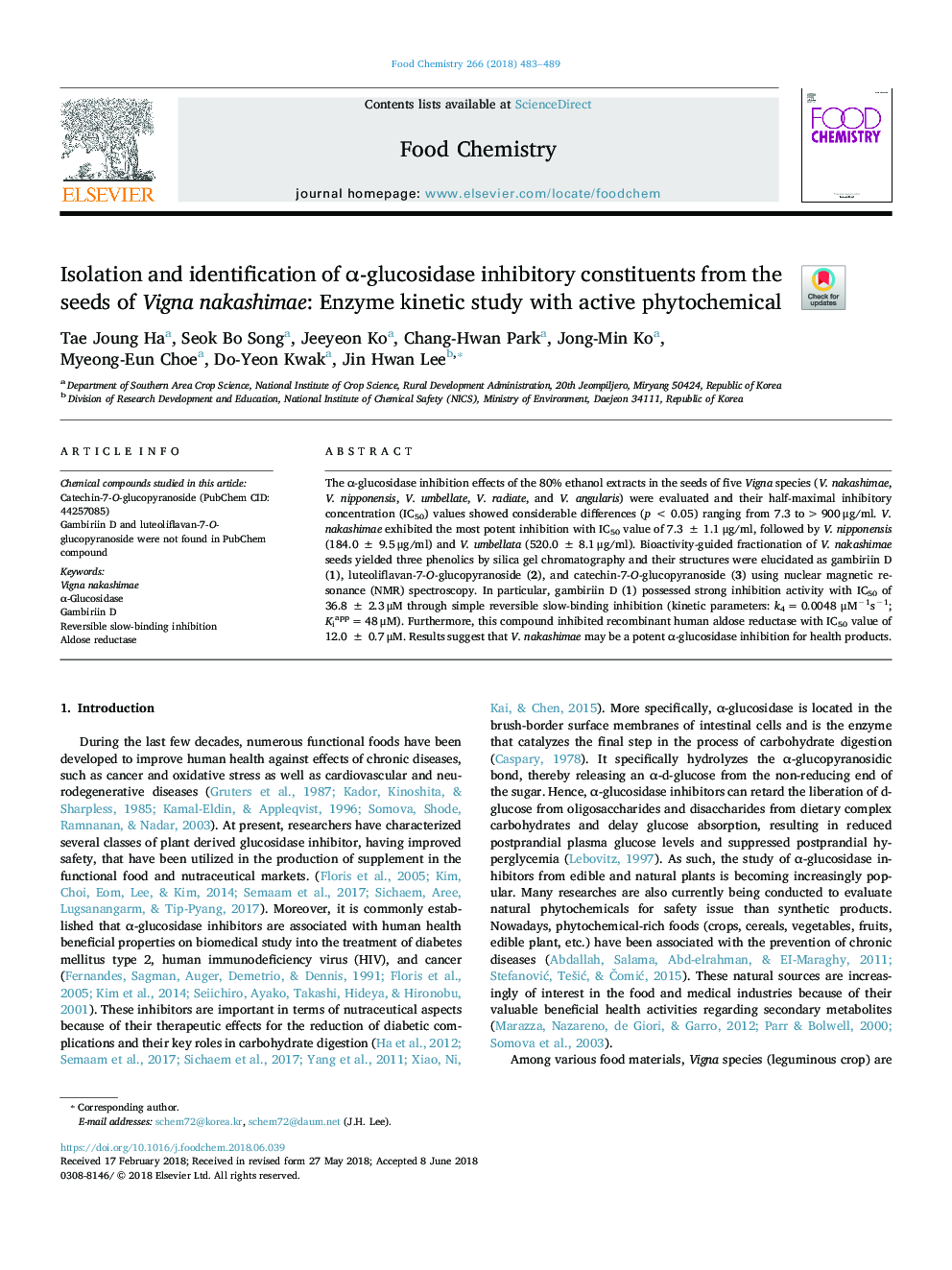| Article ID | Journal | Published Year | Pages | File Type |
|---|---|---|---|---|
| 7584588 | Food Chemistry | 2018 | 7 Pages |
Abstract
The α-glucosidase inhibition effects of the 80% ethanol extracts in the seeds of five Vigna species (V. nakashimae, V. nipponensis, V. umbellate, V. radiate, and V. angularis) were evaluated and their half-maximal inhibitory concentration (IC50) values showed considerable differences (pâ¯<â¯0.05) ranging from 7.3 to >900â¯Î¼g/ml. V. nakashimae exhibited the most potent inhibition with IC50 value of 7.3â¯Â±â¯1.1â¯Î¼g/ml, followed by V. nipponensis (184.0â¯Â±â¯9.5â¯Î¼g/ml) and V. umbellata (520.0â¯Â±â¯8.1â¯Î¼g/ml). Bioactivity-guided fractionation of V. nakashimae seeds yielded three phenolics by silica gel chromatography and their structures were elucidated as gambiriin D (1), luteoliflavan-7-O-glucopyranoside (2), and catechin-7-O-glucopyranoside (3) using nuclear magnetic resonance (NMR) spectroscopy. In particular, gambiriin D (1) possessed strong inhibition activity with IC50 of 36.8â¯Â±â¯2.3â¯Î¼M through simple reversible slow-binding inhibition (kinetic parameters: k4â¯=â¯0.0048â¯â¯Î¼Mâ1sâ1; Kiappâ¯=â¯48â¯Î¼M). Furthermore, this compound inhibited recombinant human aldose reductase with IC50 value of 12.0â¯Â±â¯0.7â¯Î¼M. Results suggest that V. nakashimae may be a potent α-glucosidase inhibition for health products.
Keywords
Related Topics
Physical Sciences and Engineering
Chemistry
Analytical Chemistry
Authors
Tae Joung Ha, Seok Bo Song, Jeeyeon Ko, Chang-Hwan Park, Jong-Min Ko, Myeong-Eun Choe, Do-Yeon Kwak, Jin Hwan Lee,
